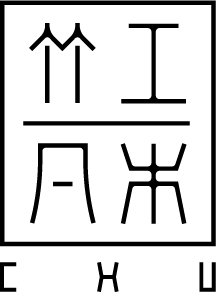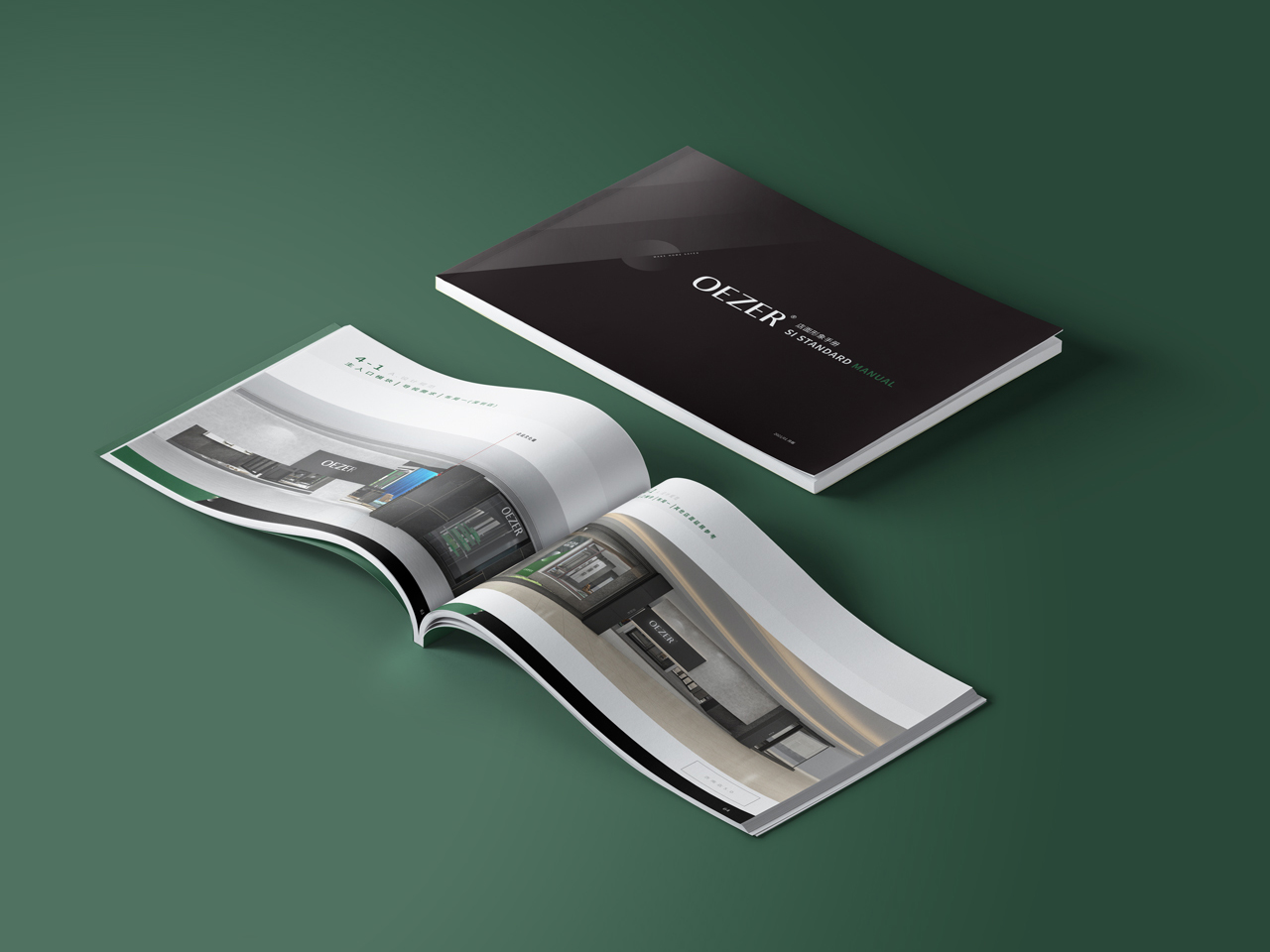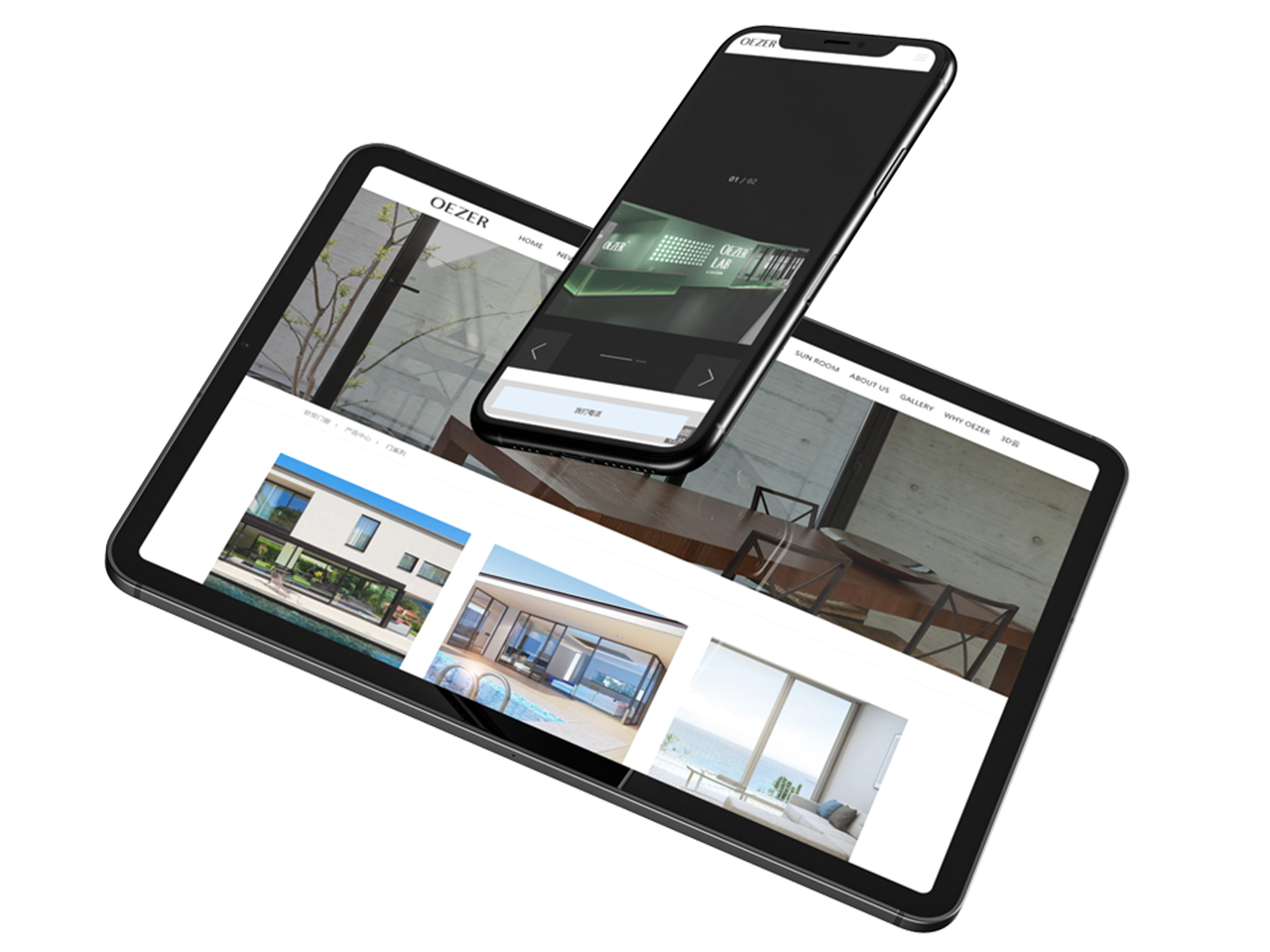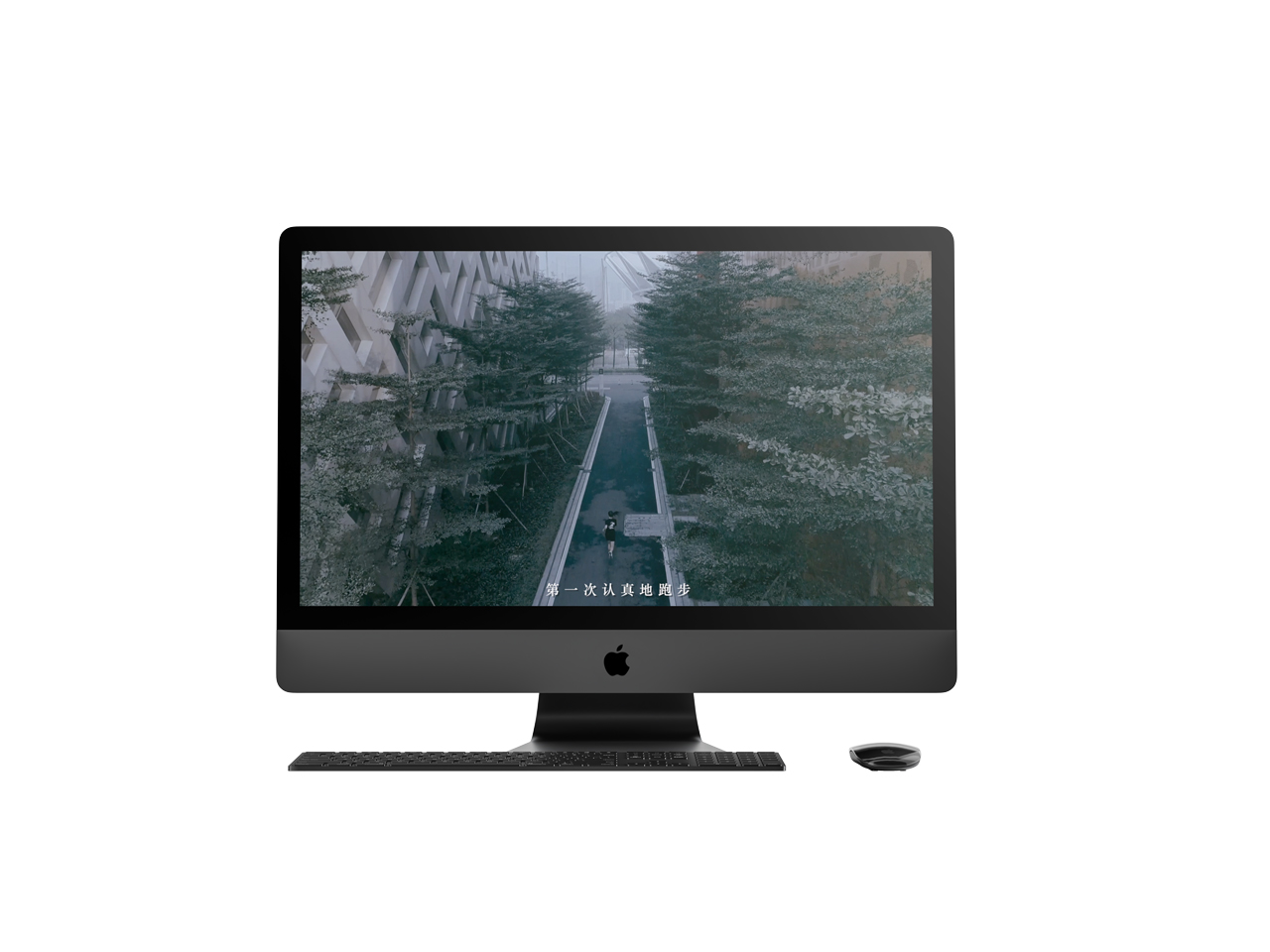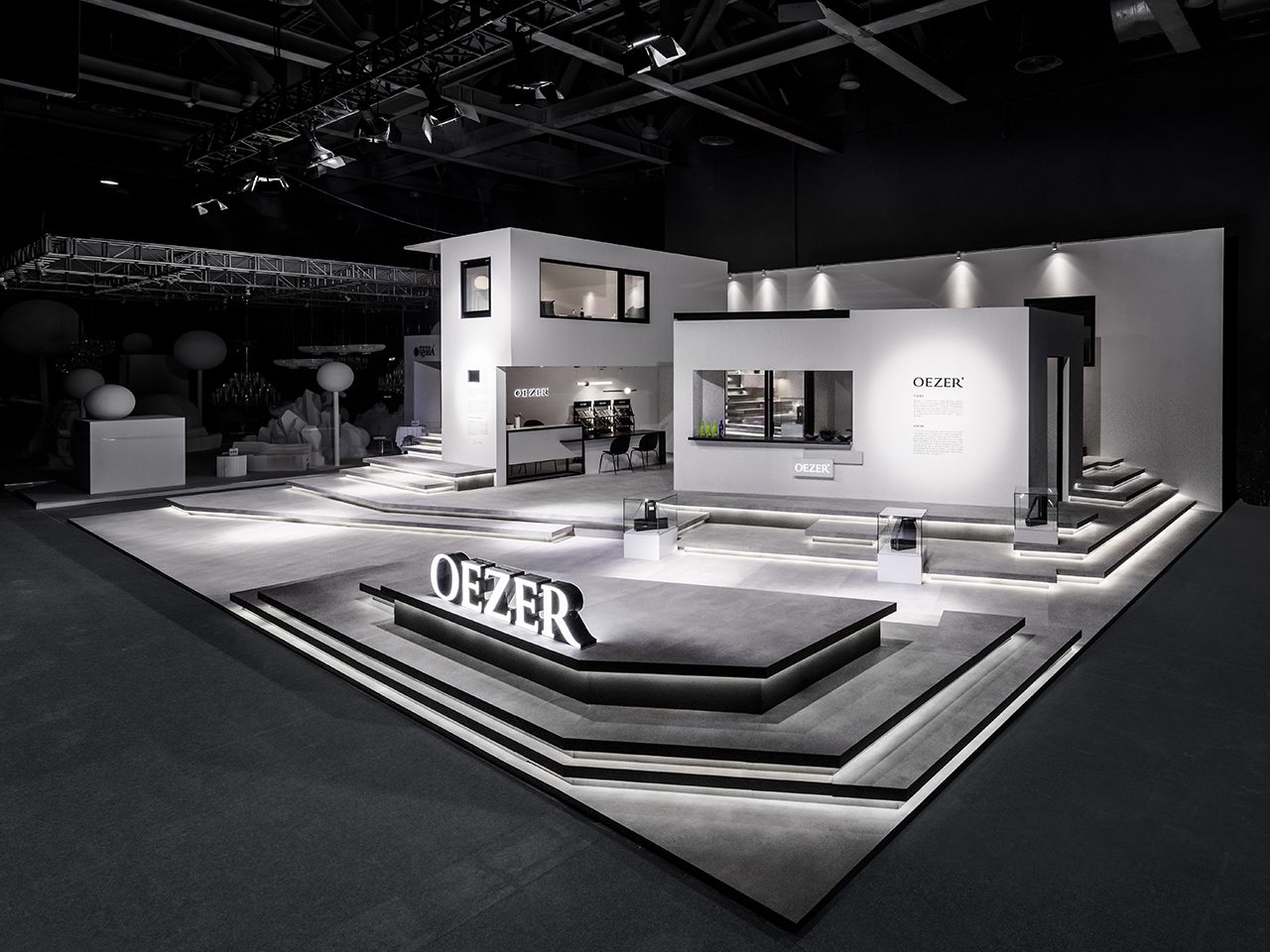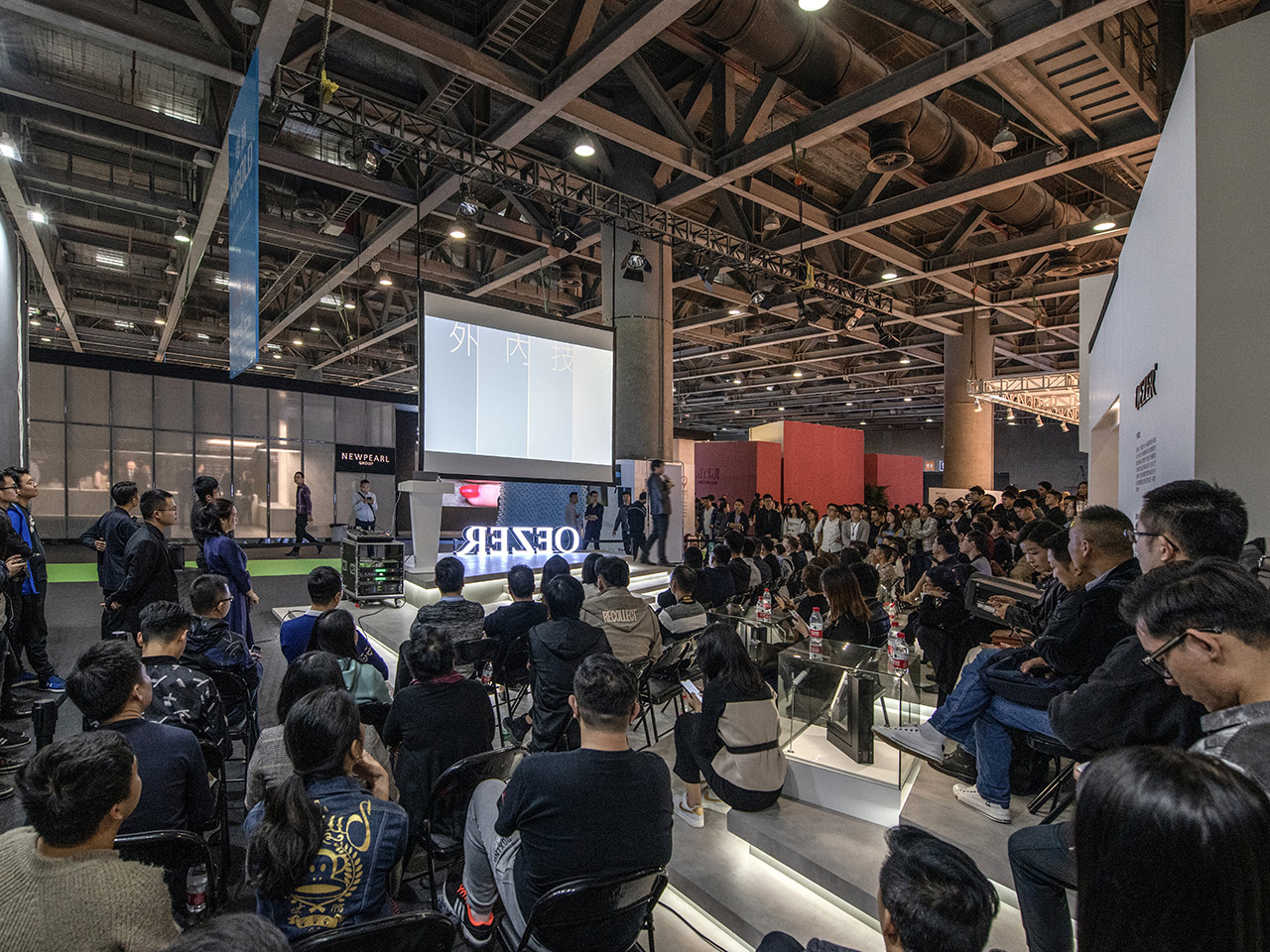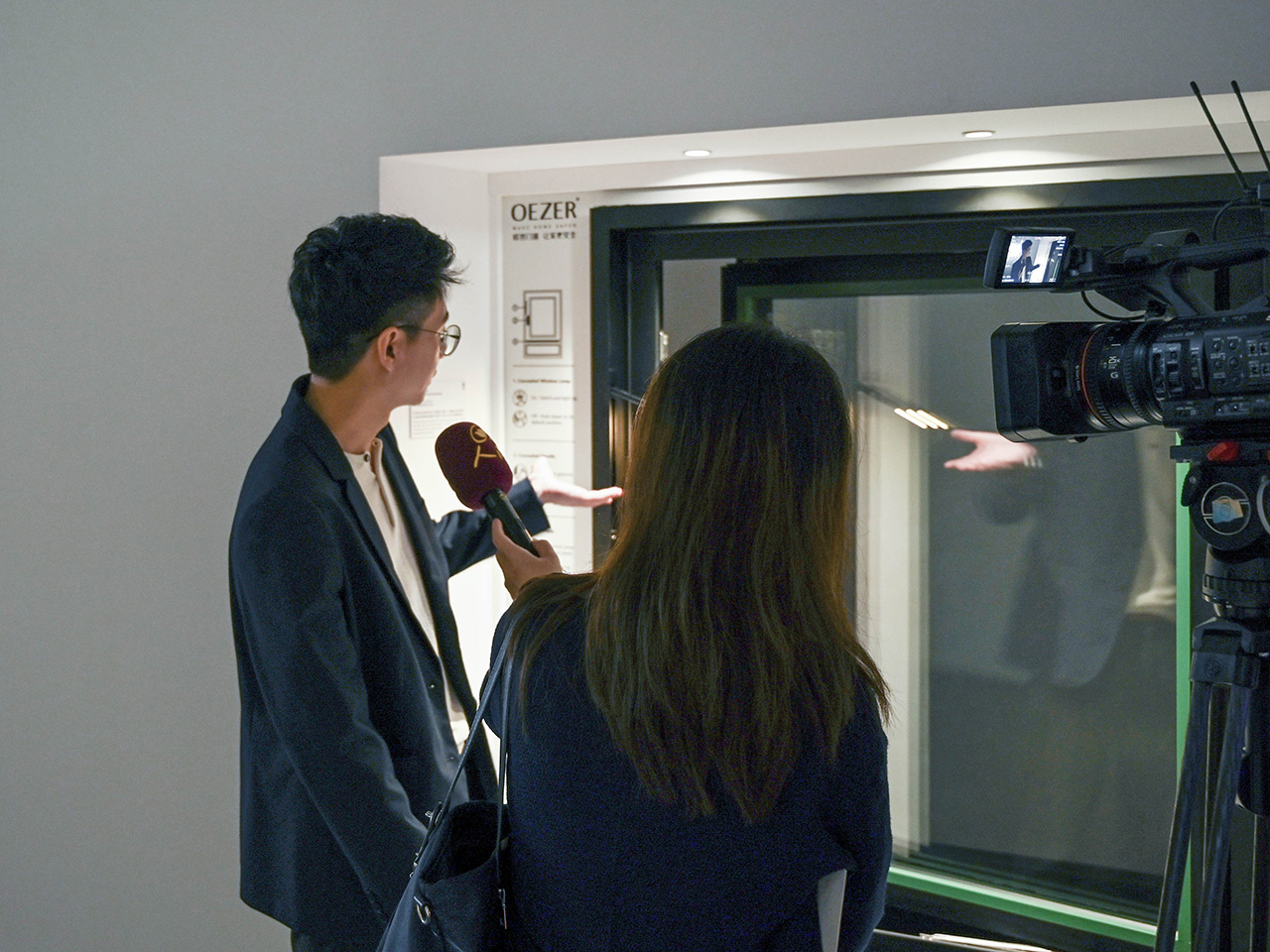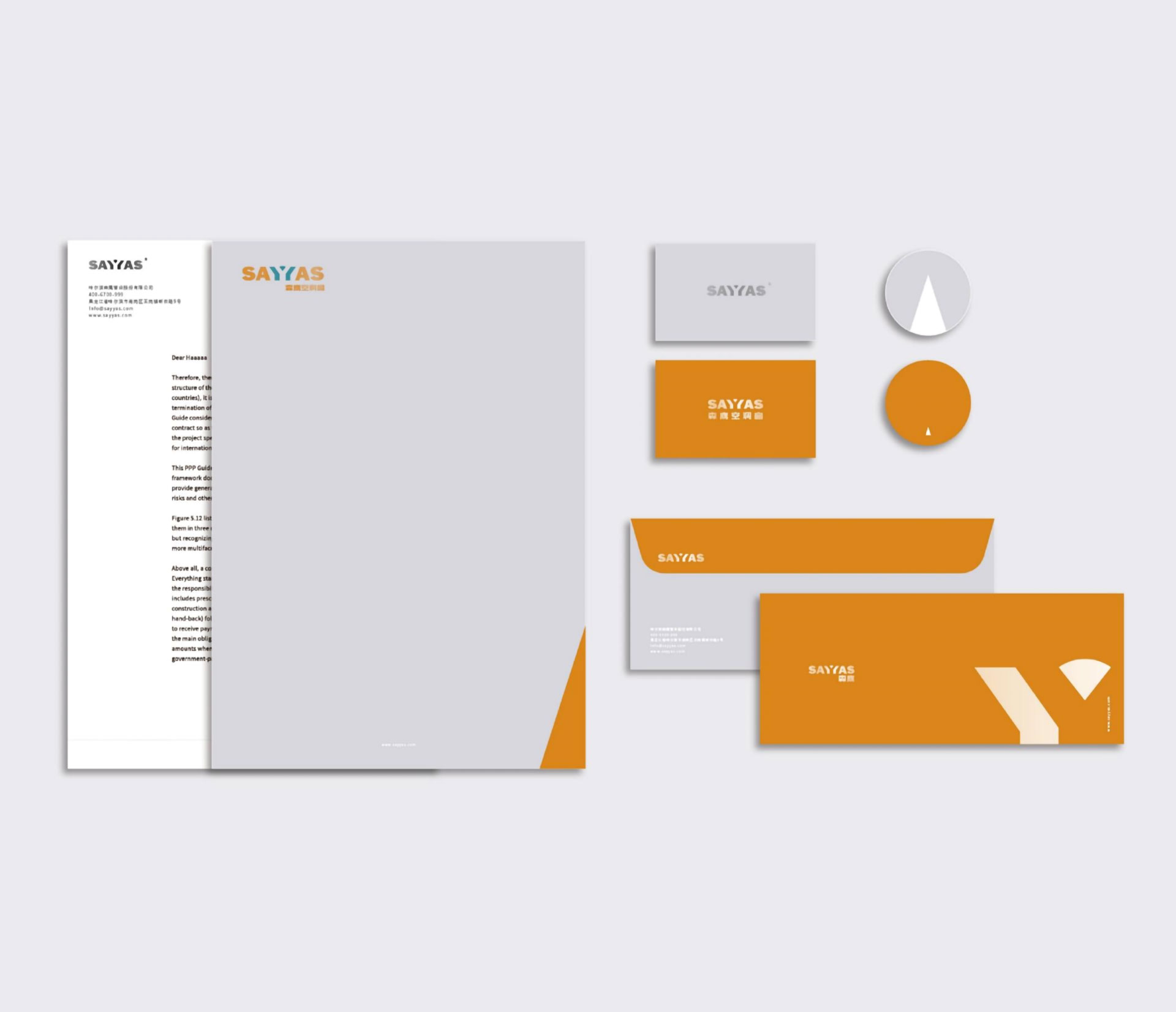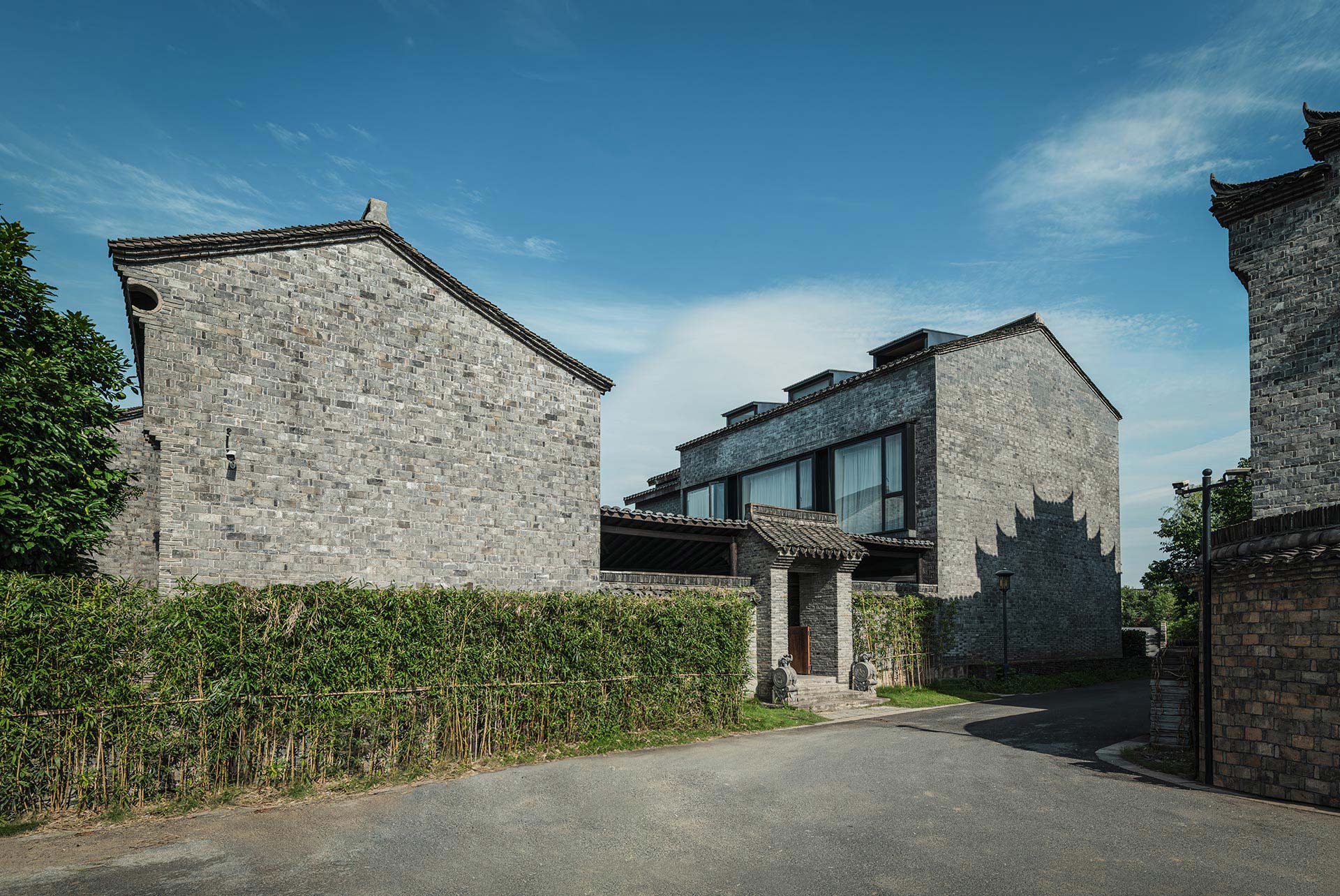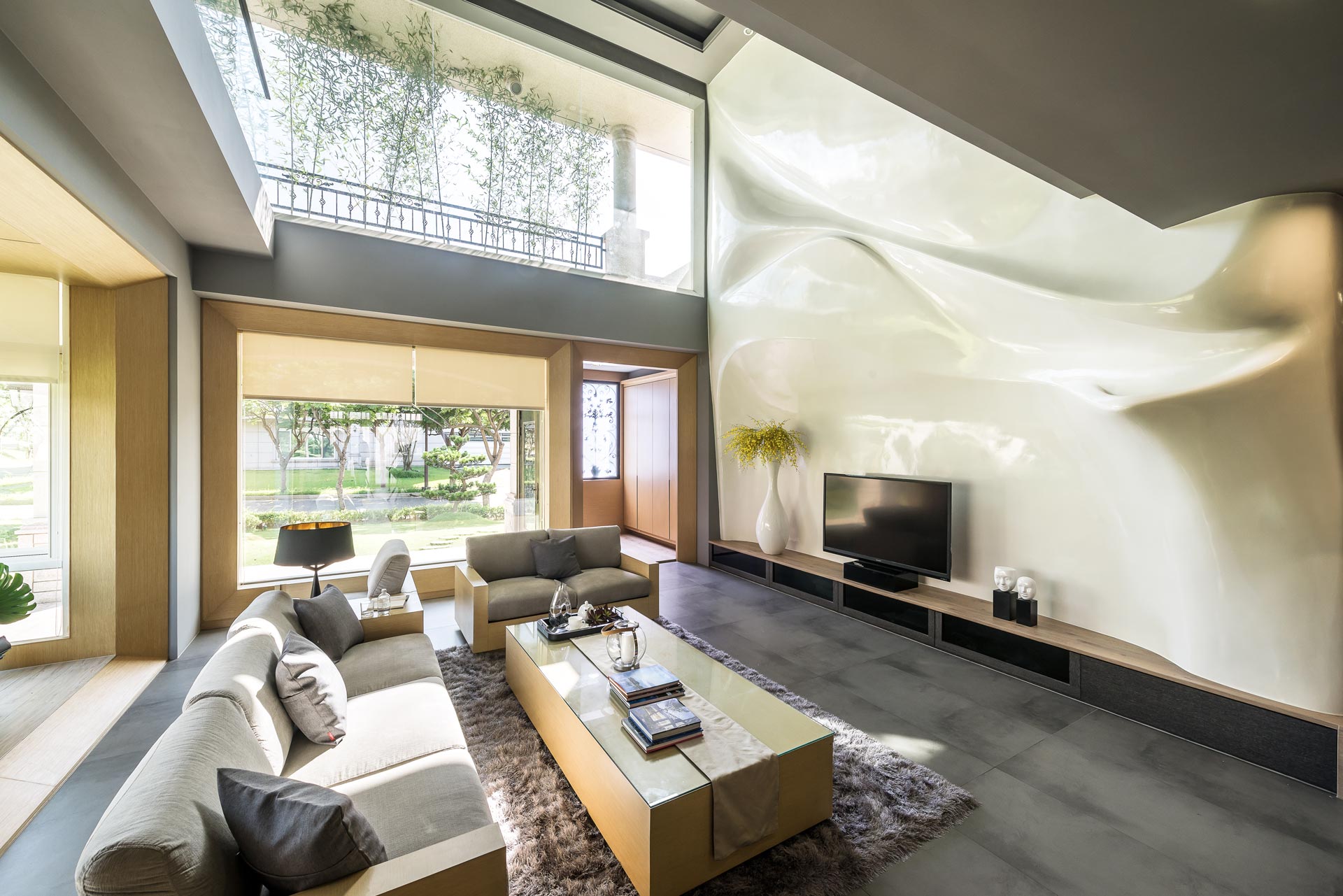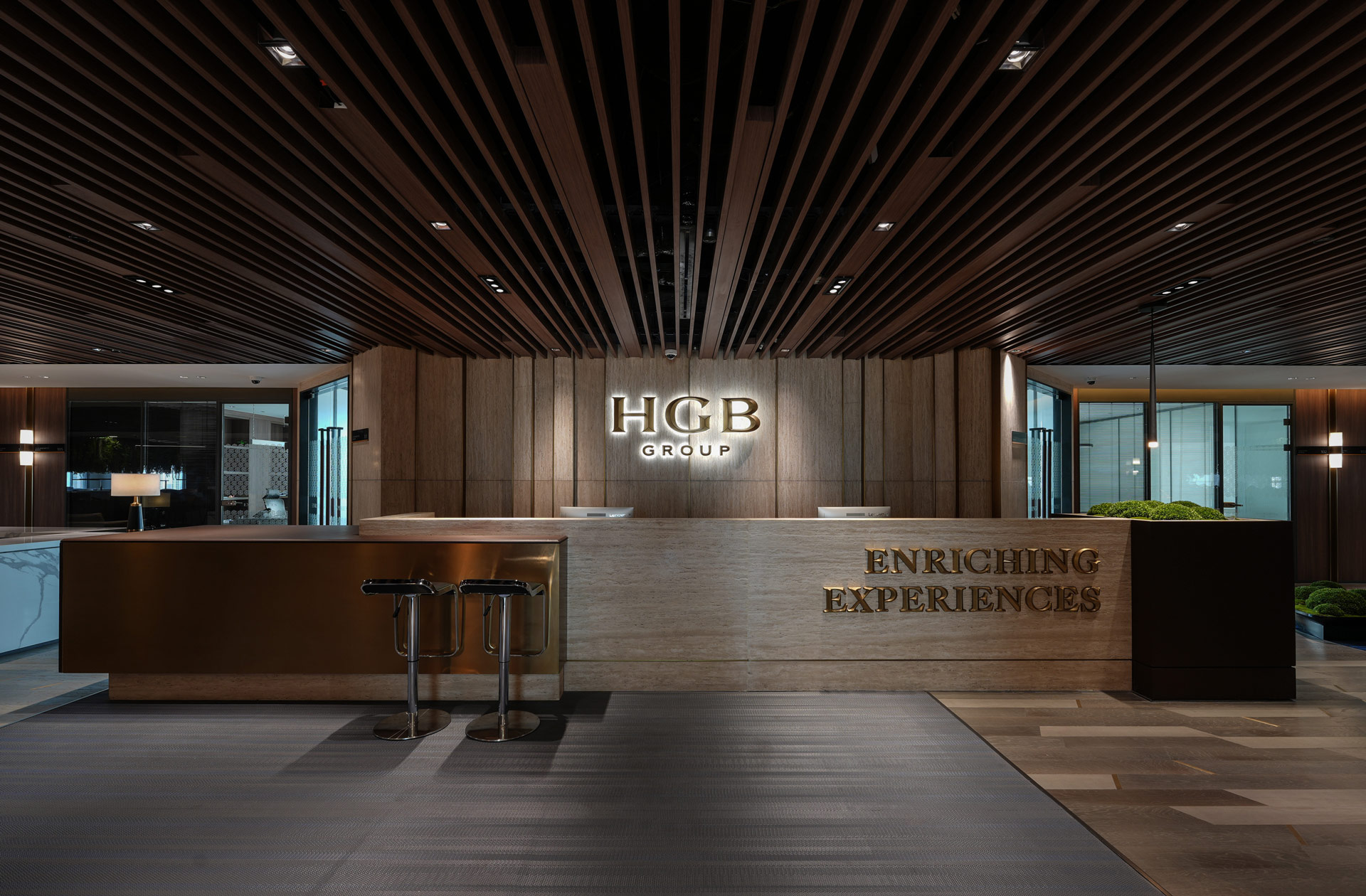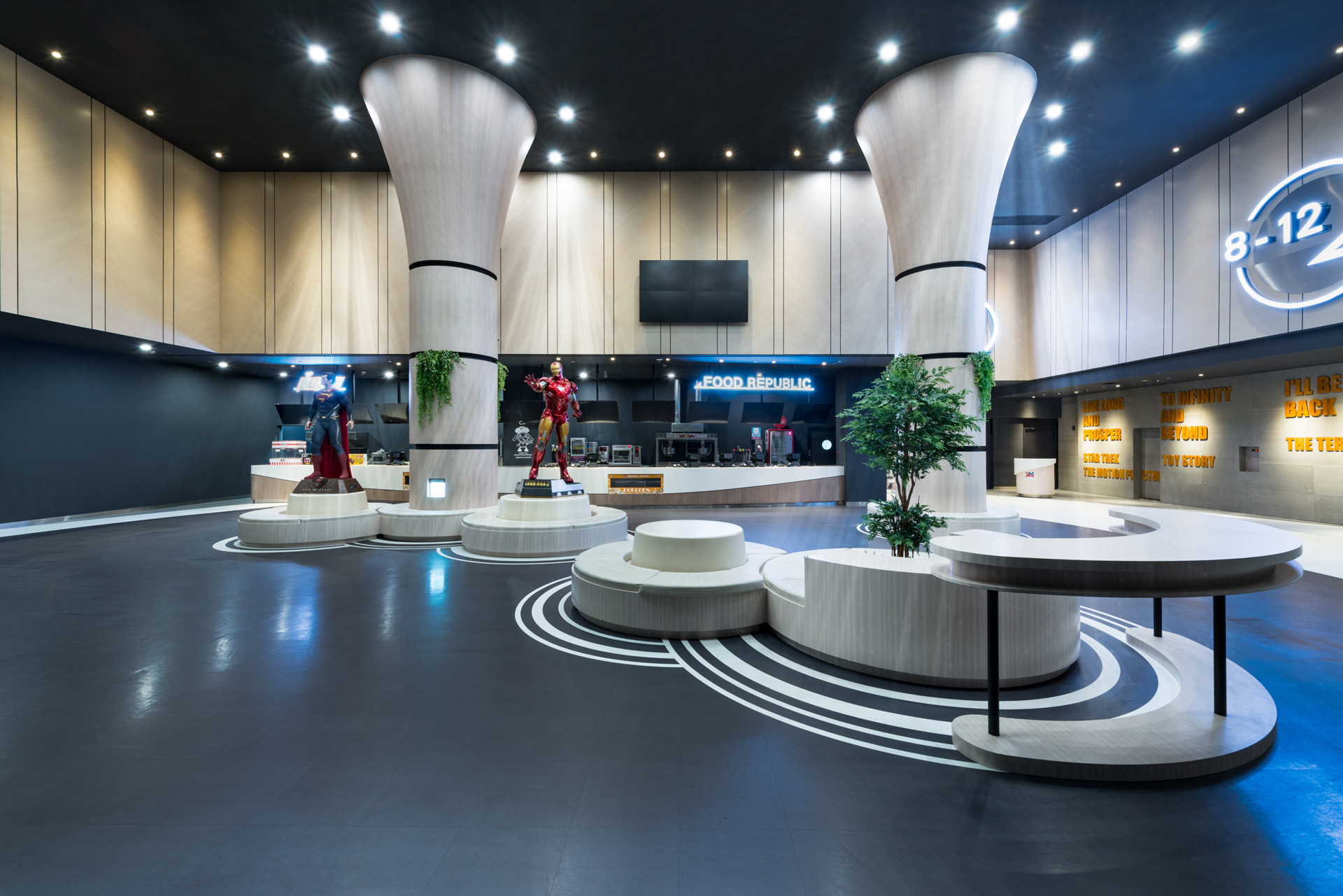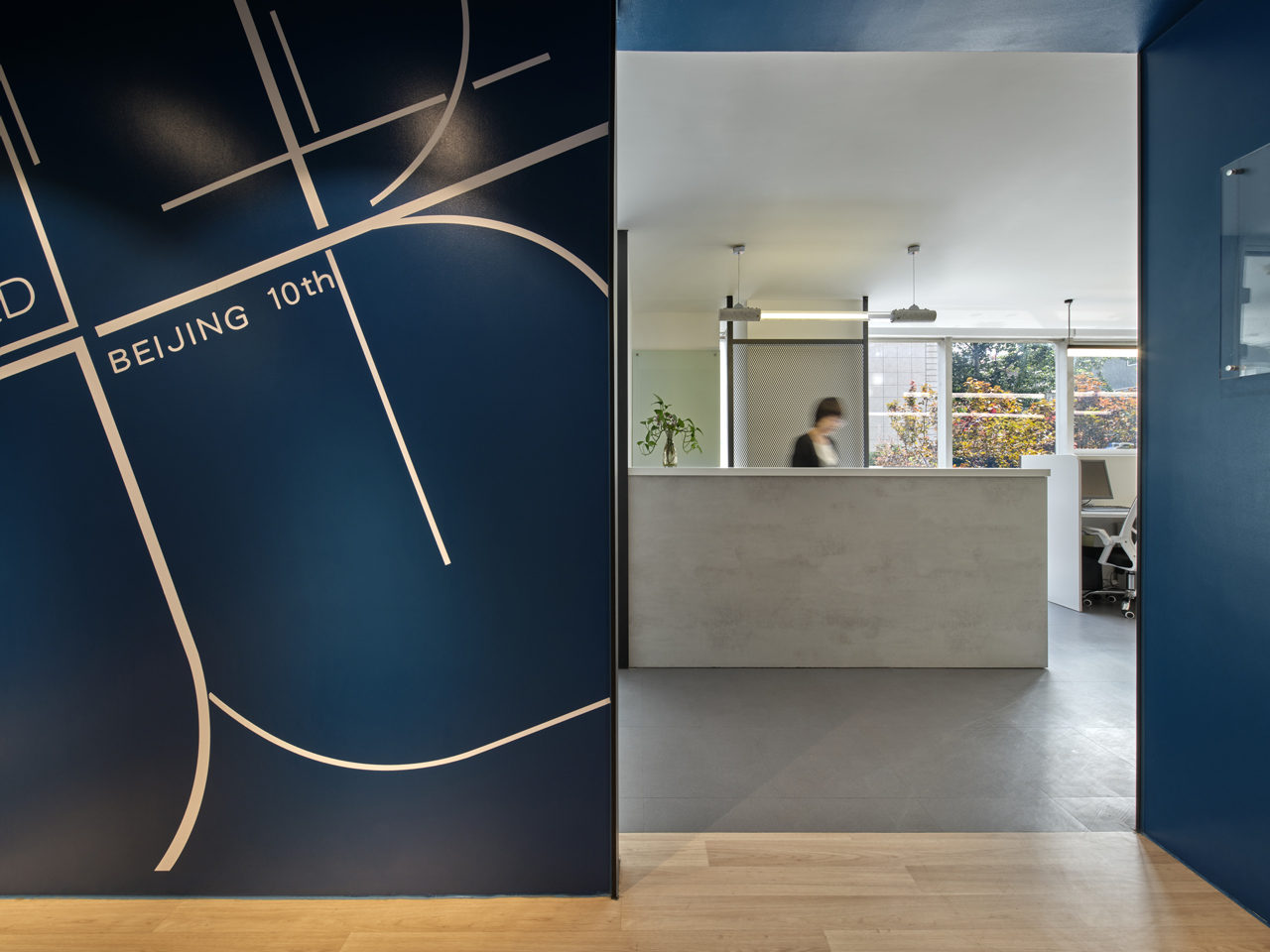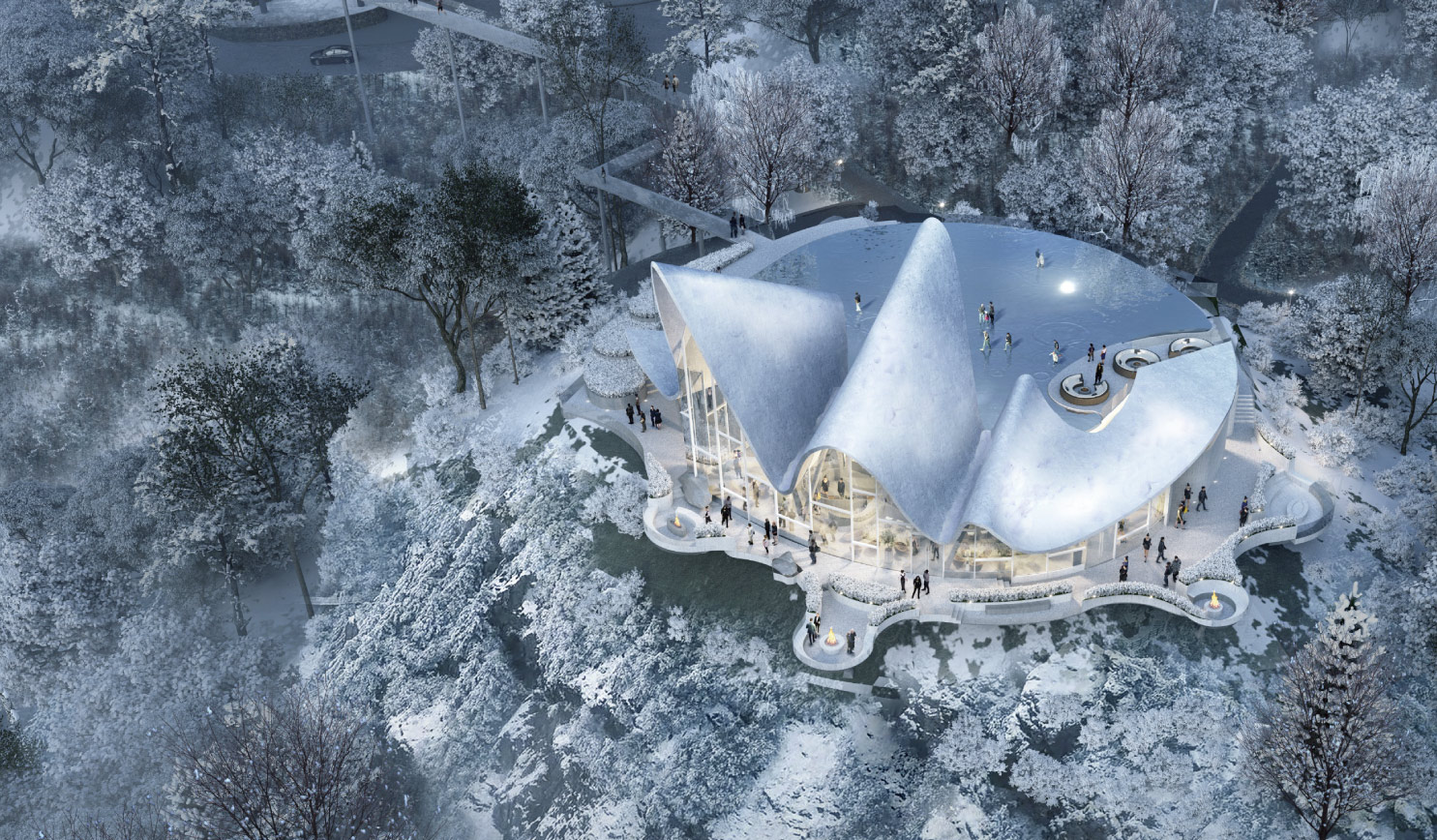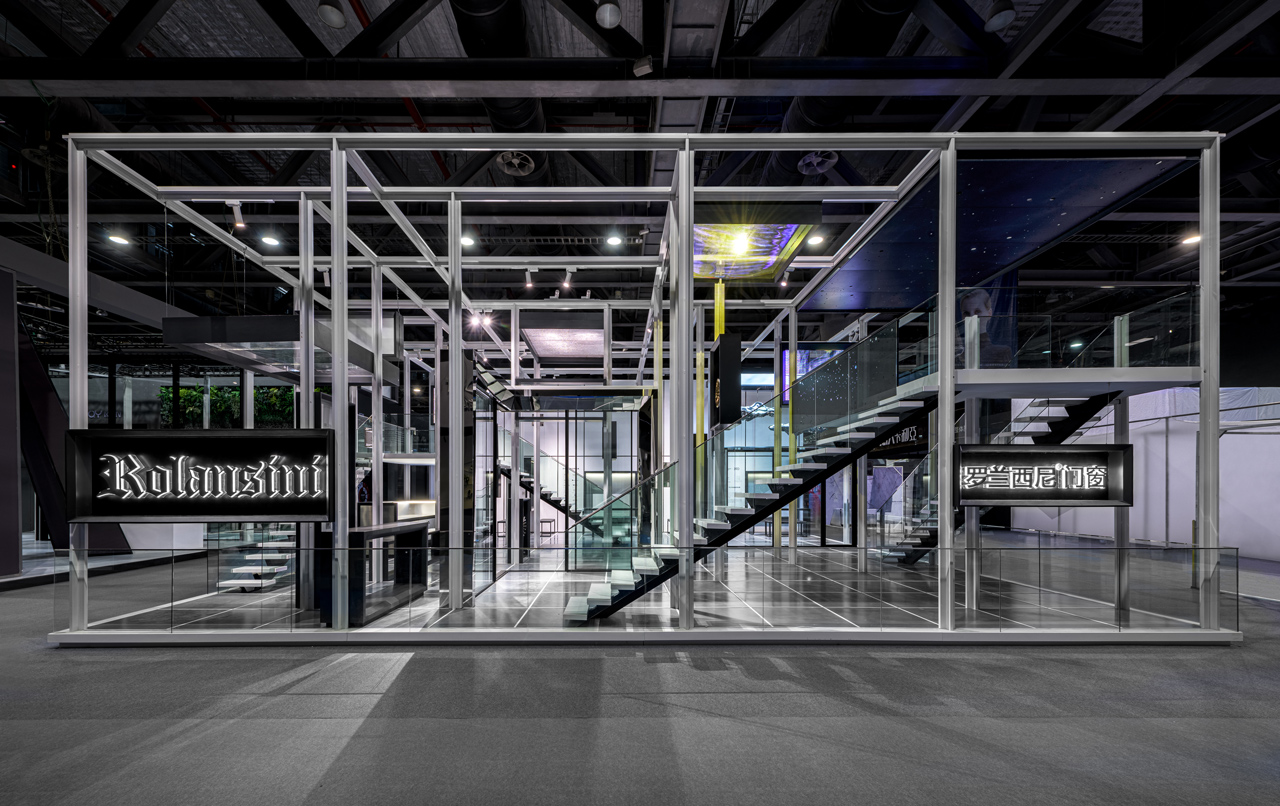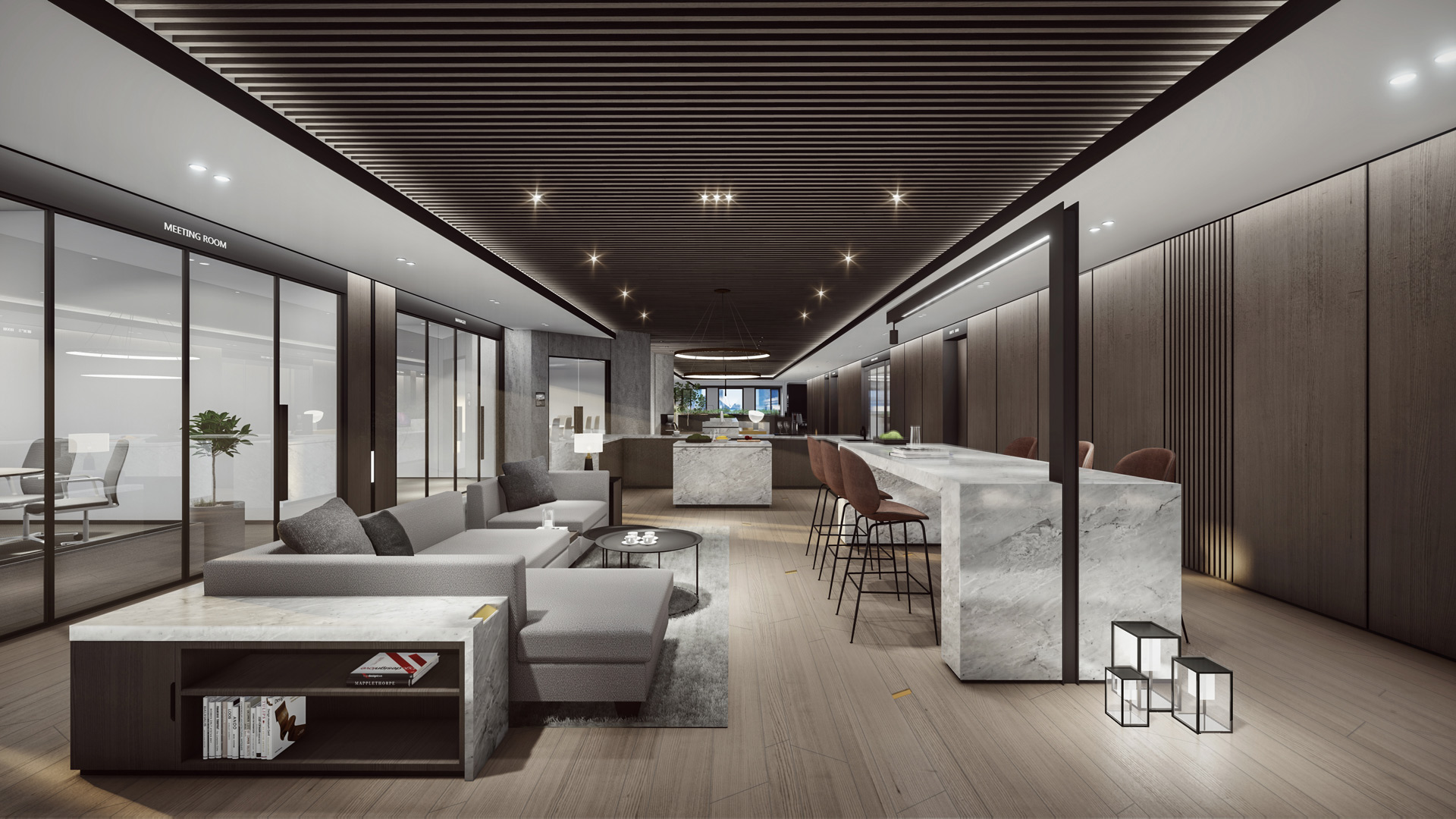品牌識別-企業形象的全面性整合方案
Branding system: a comprehensive solution of the enterprise image
OEZER 5i
品牌,一項系統性的設計介入
傳統的品牌形象識別(CIS)側重於理念識別、視覺識別、行為識別(MI、VI、BI)之三種面向,然而這三者僅能在視覺形象的基礎上建立品牌系統,缺乏空間場域、產品物件與品牌理念間的關聯。這導致了平面設計之外與品牌相關的設計項目,諸如展售空間規劃、季度產品設計、設計營銷發想……等泛品牌設計工作只能採取以片面而針對局部問題的解決策略因應,造成一個單一且缺乏連續系統化思維的碎片式處理。以品牌方角度思考,品牌設計本應是一種整體性的設計思考介入,而非單點式的個別問題解決。一個全面的品牌識別解決方案,必然會在不同問題上相互考慮並分頭進擊,最終形成一種價值論述、視覺美感與商業銷售並俱的完整企業形象。因此本團隊研發出一種系統性的全案解決方案,稱為5i,並全面導入OEZER的品牌識別設計中,目前已陪跑四年。
The traditional corporate identity system (CIS) was focused on three aspects, which are Mind Identity (MI), Visual Identity (VI), and Behavior Identity (BI). However, these three aspects could establish a branding system based on visual presentation but lack of the connection among spatial, product, and brand’s spirit. This has led to brand-related design outputs aside from graphic design, such as retail spaces, seasonal products, and marketing events that only respond to partial issues, resulting in a brand thinking without systematic yet not comprehensive. Step into brand owners’ shoes. The branding should be an intervention of holistic design thinking rather than solutions to partial issues. A complete branding proposal will certainly consider various perspectives and solve each of the problems, eventually become an enterprise image that involves a solid mission statement, visual aesthetics, and business success. Therefore, the design team developed a total solution called 5i and integrated OEZER’s branding identity design for four years.
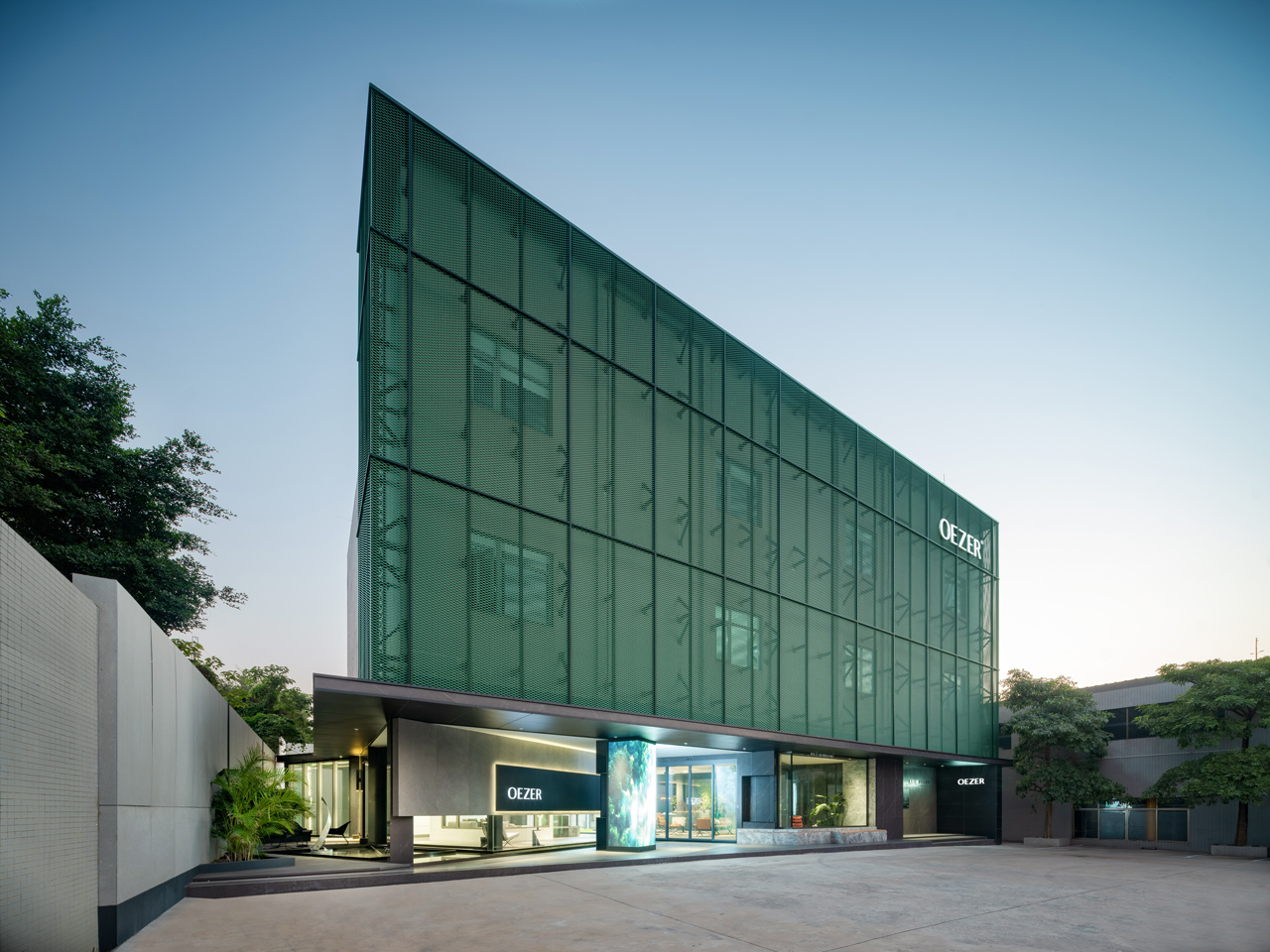
系統整合-從品牌精神、產品、視覺、空間到營銷的設計體系
Systematic integration: form mind, product, visual, space to behavior
品牌識別整合系統(integrated brand identity design system,簡稱5i系統)是本團隊歷經多年市場調研並結合實務經驗後去蕪存菁的設計架構,可使品牌核心精神的傳達更臻完整。作為企業識別核心,品牌的系統性解決方案至關重要,為解決既有品牌識別無法系統化連結不同項目的情況,團隊整合了品牌價值體系(MI;mind integrated design)、產品識別標準(PI;product integrated design)、品牌視覺體系(VI;visual integrated design)、品牌空間標準(SI;space integrated design)、設計營銷體系(BI;behavior integrated design)等五大面向。從品牌DNA建立、形象具體視覺化、展售空間與產品整合,到最終以教育及設計營銷手段完善,讓完整的5i項目打造出系統性的品牌形象。
The 5I system (Integrated Brand Identity Design System) is the result of our years of market research and practical experience, it is a design framework that allows the brand spirit to more completely convey. As the core of brand identity, the systematic solution is crucial. To solve the issue that the identity cannot link different outputs, we had integrated five major aspects of the branding, including Mind Integrated Design (MI), Product Integrated Design (PI), Visual Integrated Design (VI), Space Integrated Design (SI), and Behavior Integrated Design (BI). From fundament establishment, image visualization, exhibition space & product integration, to dealer education of marketing methods, the complete 5I can form a systematic brand image. Such a theory could avoid brands from the issues of lack in systematic and not comprehensive results, which are the general CIS suffered.
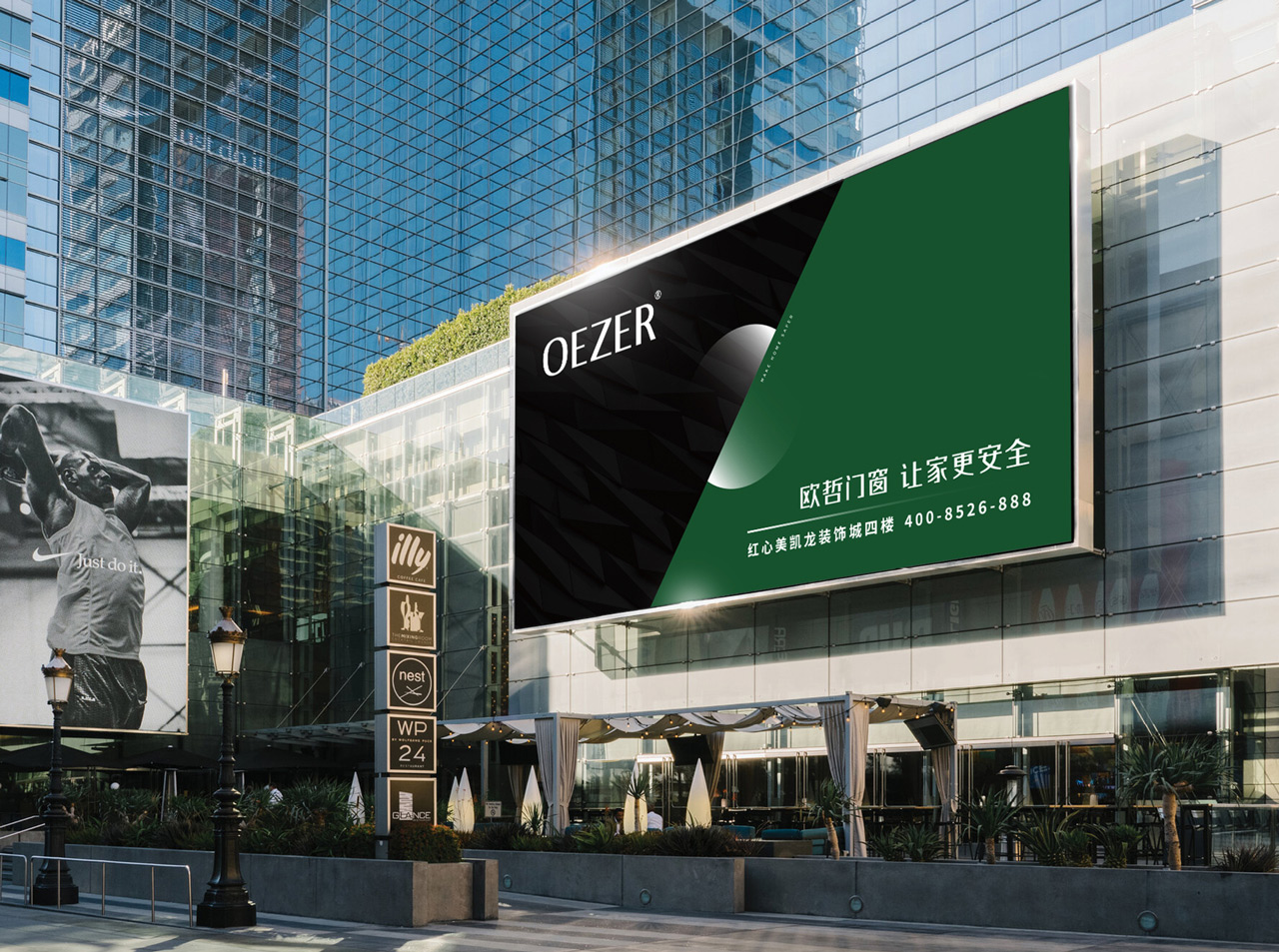
永續整合-以完整架構持續性地滾動品牌發展
Sustainable integration: rolling the brand development with a complete framework
傳統企業通常重視產品本身,卻忽略了品牌核心精神。因此,團隊藉由5I系統建構出品牌思維邏輯,在「永續」的理念下提出系統性的解決方案,讓不同項目間彼此互有鏈結並產生關聯。過去,設計團隊在與業主的溝通過程中,常針對每個獨立項目提出單點式的解決方案,但由於整體系統並的不連貫及不同設計團隊間的認知落差互不熟悉,且業主也並非專業設計背景出身,總是需耗費大量資源與精力溝通,最終導致一加一小於二的結果;而現在,透過5I系統,我們得以用輕盈的方式將設計串接、形成系統,進一步提出具永續性的完善品牌運營方針。
Since traditional enterprises usually focus on the product itself but ignore the core spirit of themselves, our team built up the brand thinking with 5I system under the concept of "sustainability", so that different outputs can be linked. In the past, we often proposed individual solutions for each output in the process of branding, but due to the inconsistent theory application, incoherence between multiple design teams, and different professional field of enterprise owners, the problems of spending too many resources on communicating end up with inefficiency results again and again; with the 5I system, we are now able to easily connect design theories, forming a systematic solution, and develop a sustainable yet comprehensive branding guideline.
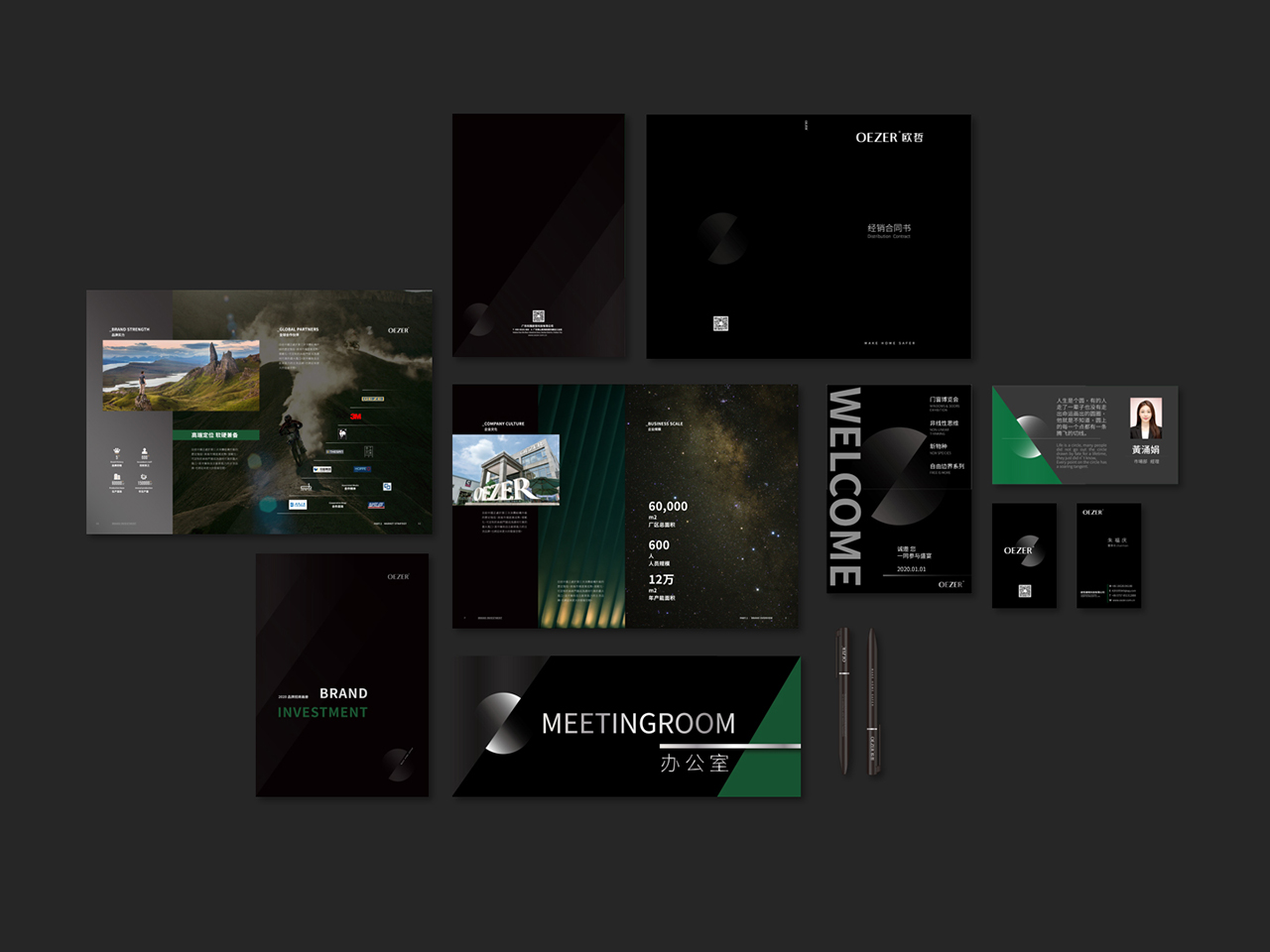
歐哲門窗-品牌識別案例
OEZER: the example of 5I system applications
在長期缺乏品牌意識、屬於傳統建材領域的門窗產業中,歐哲門窗長期關注著系統門窗、幕牆與陽光房的研發、製造與營銷。他們以節能環保為目標,由最初著眼實用性的基礎,走向今日對實用、堅固及美觀並重的追求,期許能打入消費者內心。本團隊與歐哲深耕四年,將5i系統與品牌整合、落地,以「門窗不再只是門窗,而是一種生活方式的延伸」的設計概念具體串聯、落實於泛設計項目中。在品牌主張安全、永續、整合的三大核心理念基礎上重新設計視覺識別系統,並推出《拾光窗》系列產品。同時,在空間規劃上以轉45度角的斜向佈局設計手法創造不可預期的交流空間,並實踐於企業總部大樓及不同型態的大小門店。最終,這個由近至遠,從小到大的5i思維在市場驗證下真切地位企業品牌提供全方位的設計解決方案,更有幸於2018年被帶往威尼斯參與設計展會、向世界推廣。
OEZER, in this traditional window & door manufacturing industry that lacked brand thinking, has always focused on the R&D and marketing of systematic windows and doors, curtain walls, and sunrooms. With the goal of energy-saving and environmental protection, they have moved from the fundament focusing on functionality, to today’s pursuit of both practicality, durability, and aesthetics, aiming to impress the consumers. During the four-year cooperation with OEZER, we integrated the 5I system with the brand itself and practiced the concept of “windows and doors are not merely architectural elements, but the extension of a lifestyle” into every output of physical to digital.
Base on the core concepts of safety, sustainability, and integration, we redesigned the visual identity system and further launched the “Immaculate Light” series. In terms of space, the tilted layout to set undefined spaces had also implemented within HQ and other retail stores in various scales. In the end, this comprehensive branding solution which considering from a micro to macro perspective and proven in the market was honored to participate in Venice Biennale in 2018, promoting it to the world.
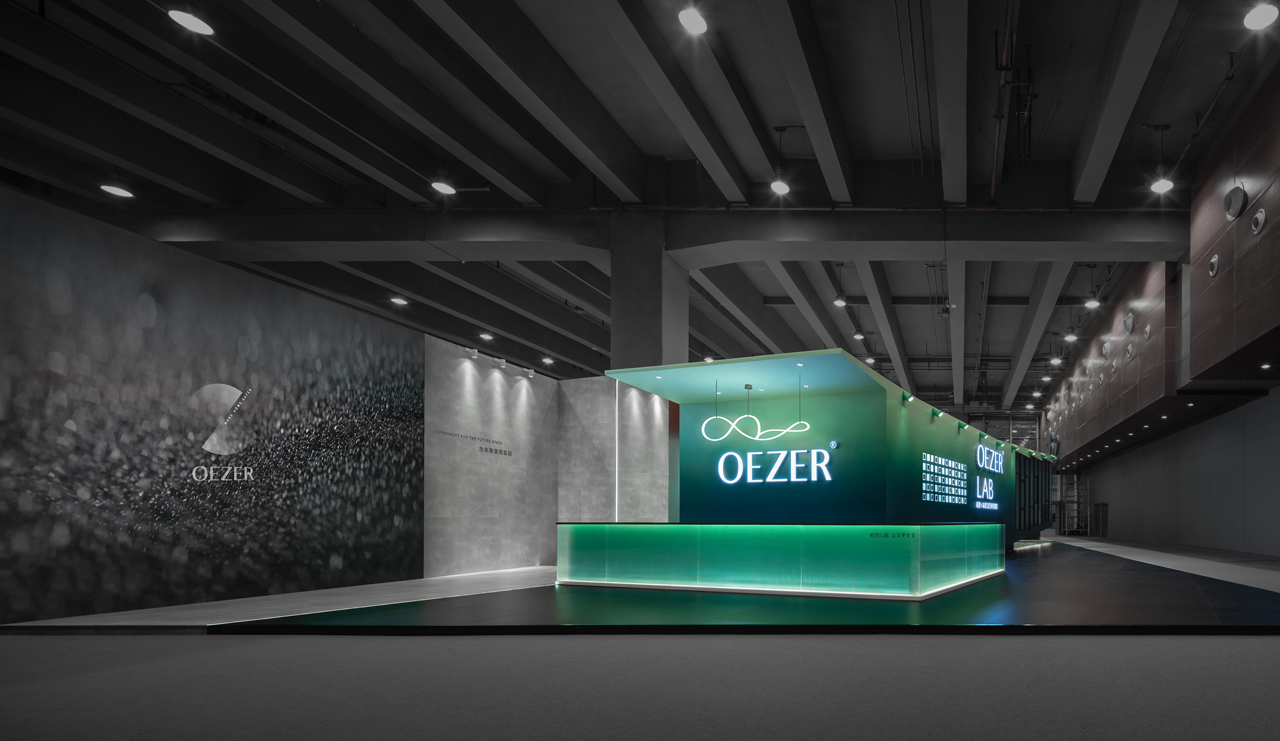
歐哲門窗-5i系統簡述
The 5I system overview
- 理念識別設計 MI(Mind Integrated Design):
設計團隊將歐哲品牌定位為「門窗不再只是門窗,而是一種生活方式的延伸」的理念,貫徹其過去「少即是多」的精神、走入消費者的內心層面,進而打造門窗界的自由新物種。以這樣的概念,發展出品牌重視研發與創造性的特質,讓門窗超越功能性的框架而作為一種生活方式的延伸,透過門窗建構新時代的空間體驗,再造智能、安全、美感新家園,而這樣的理念也讓品牌獲得眾多國際獎項肯定。
- MI (Mind Integrated Design):
The concept of “windows and doors are not merely architectural elements, but the extension of a lifestyle” is the belief of OEZER, to keep themselves with the spirit of “Less is More” and impress consumers, further create “new species” within the industry of window & door manufacturing. Base on this concept, they developed a characteristic emphasizing the R&D and the sense of creativity, letting windows and doors break the traditional frame of functionality, become lifestyle extensions. Such a space experience of the new era constructed through windows and doors given the ability to build a smart and secured home with aesthetic, and awarded by a variety of international organizations.
- 產品識別標準 PI(Product Integrated Design):
將著重生活方式的MI思維貫至產品設計中,《拾光窗》為團隊因應品牌識別形象所設計的門窗系列產品。結合隱藏燈光與伸縮檯面,在不影響既有開闔出入的使用功能下,將門窗形塑為休憩、閱讀的居家角落。多元的使用方式強化門窗作為中介場域之機能性,展現品牌重視研發與創造力的特質,進而回應「門窗不再只是門窗,而是一種生活方式的延伸」之理念。
- PI (Product Integrated Design):
Immaculate Light was a series of windows and doors designed by our team to integrate the lifestyle-oriented MI mindset into the product design. With the combination of a concealed lamp and retractable desktop, this series of products could serve as living spaces for relaxation and reading without affecting the usage of ventilation and access. Its rich possibilities strengthen the functionality as a space intermediary, demonstrating the brand's emphasis on R&D and the sense of creativity, further responding to the concept of "windows and doors are not merely architectural elements, but the extension of a lifestyle”.
- 品牌視覺體系 VI(Visual Integrated Design):
視覺上以品牌重塑的角度出發,從提案階段便逐步藉由視覺系統的重新梳理,具體落實在品牌標誌、色彩、輔助圖形、事務用品、企業宣傳影片及線上多媒體平台(官方網站、自媒體)的整體視覺呈現中。順應品牌屬性,整體視覺趨向更簡化、俐落的方向調整,對應企業追求「自由新物種」的理念並扣合MI核心架構,使VI與MI得以相互對照、彼此關聯。
- VI (Visual Integrated Design):
From the proposal stage, we had solidly reorganized the visual system through a branding perspective, which was implemented in logo, colors, auxiliary patterns, office supplies, advertising videos, and digital platforms such as website and social media. In line with the brand characteristic, the overall visual design adjusted into a simplified style, corresponding to the enterprise pursuit of creating the “new species" and having a strong connection with MI.
- 品牌空間標準 SI(Space Integrated Design):
自企業總部展廳、展會、終端店、線下營銷活動到年會等品牌體驗空間皆由團隊統一設計,這些場域圍繞著MI與VI的主軸發展,進一步轉化成空間應用的語言,這包括了轉向45度角的斜向佈局轉向的與打破傳統陣列一進一進的格局,營造出許多不可預期空間,在打開空間核心之餘亦破除隔間帶來的限制,進而建構空間創造力。
- SI (Space Integrated Design):
Our team had designed those brand-experience spatial with the mindset of MI and VI as the practice for the space design language. From enterprise HQ, exhibition booths, retail stores, marketing events, to annual gatherings, the method of progressive traffic flow, and tilted layout which turned to a 45-degree angle had successfully set aside undefined spaces for interactive, breaking the traditional zoning theory and further construct the creative space.
- 設計營銷體系 BI(Behavior Integrated Design):
落地營銷體系含括三大面向:首先是前往義大利建築雙年展參展,積極參與大陸在地的重要展會、推廣品牌設計力;其次藉由舉辦大量課程教育經銷商,提升第一線人員對品牌的認知與向心力,進而傳達給消費者;最後再以暢通的設計師渠道,協助品牌及設計師對接,提升產品的品質與美感。
- BI (Behavior Integrated Design):
The BI system consists of three major sectors:
- We actively participated in exhibitions of the Chinese local market and Venice Biennale in Italy to promote the brand spirit.
- We organized numerous lectures for deals to build them up, raising their awareness of the brand which could indirectly convey to consumers.
- We assisted the brand in connecting with designers to enhance the quality and aesthetics of products.
